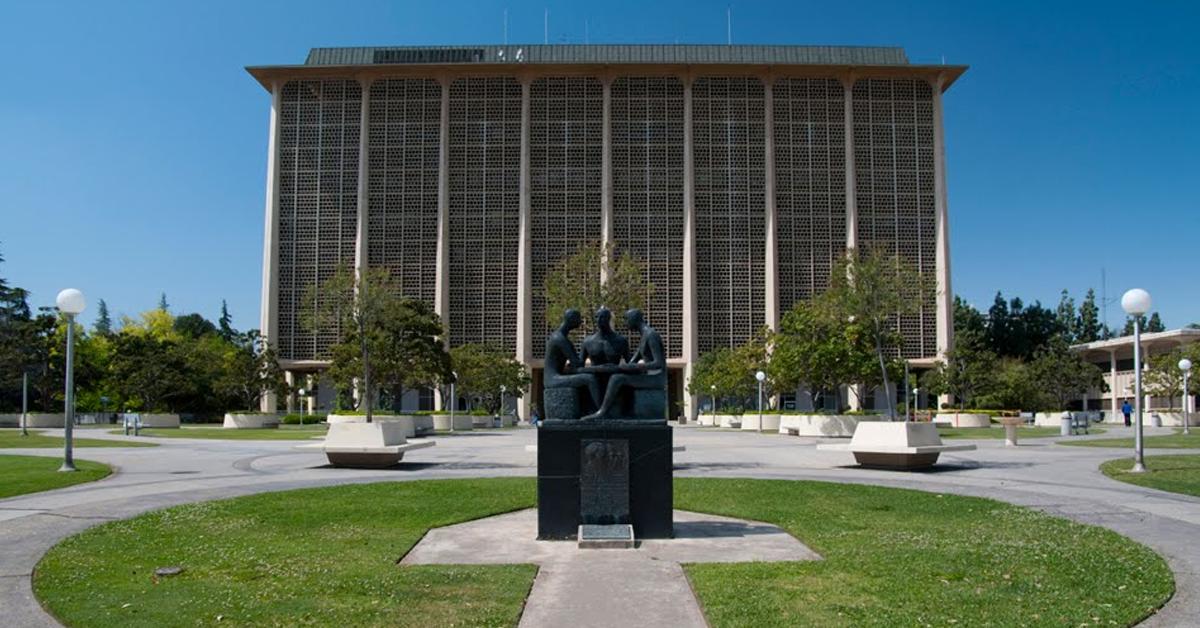The next battleground in Fresno’s long war over code enforcement has nothing to do with housing. The fight has now moved into the commercial arena.
City Hall is suing the owners of a recyclables-storage business in east-central Fresno, claiming their storage of things like foam rubber in huge piles on the site’s outdoor yard is a public health hazard.
City Hall doesn’t merely want the owners to clean up the place and follow the rules. City Hall wants authority to put the property in receivership – which could lead to new owners.
The owners – Michael and Vincenza Occhionero and their son, Greg Occhionero – say they follow the rules, vague though they often are. On top of that, they say, city officials are guilty of selective enforcement laws regulating how businesses must operate.
Greg Occhionero has sued City Hall, claiming his civil rights are being violated.
On the surface, all this seems like another example of the tension that can arise in a society that cherishes both public interest and private independence. What makes City Hall vs. the Occhioneros unusual is time – the two sides have been butting heads for 13 years.
Mayor Ashley Swearengin as her second and final term draws to a close is vowing tougher enforcement of city code. If the city is right in the Occhionero case, why the long delay in getting the site permanently cleaned up? And if the Occhioneros have a point, why a persistence from City Hall that sure looks like harassment?
City officials aren’t talking, saying they must curb their tongues because things have entered a court of law. But you can hear them whisper “Archie Crippen.” Crippen was owner of the recycling business whose immense woodpile caught fire in January 2003. The air pollution caused a public health crisis that lasted for days.
City Hall, roundly criticized at the time for its apparent regulatory indifference, doesn’t want a repeat performance from the Occhioneros.
And the Occhioneros refuse to give up for what their son says is the soundest of reasons: They have rights, too.
A BOOMING PART OF TOWN
There are many pieces to this story.
For starters, there is geography. The Occhionero business is at 2680 N. Miami Avenue. This is halfway between Clovis and Fowler avenues, a bit north of Clinton Avenue. Fresno Yosemite International Airport and Airways Golf Course are about a mile to the west.
There’s a sandwich shop within walking distance of the Occhioneros’ place. Everything else appears devoted to what you’d expect in an industrial park – auto repair shops, light manufacturing, providers of various services to the industrial sector.
I walked through the area last week. It’s clean and busy. The businesses tend to operate behind six-foot-high fences.
But to look farther afield is to see how rapidly this part of town is changing. Melody Park, about to get an upgrade thanks to Council President Paul Caprioglio, is on Shields Avenue less than a mile away from 2680 N. Miami. The new Belterra by Granville Homes project (houses start in the high $200,000s) is on Fowler between Shields and Clinton. The city’s new surface water treatment plant, destined to secure Fresno’s water future for generations to come, is being built a mile to the southeast.
Some critics say only West Fresno is home to concentrations of industry set amid residential neighborhoods. The Big Sky country of East-Central Fresno proves otherwise.
Then there’s the Occhionero’s business model.
According to court records, the site doesn’t have a brand name beyond “Occhionero storage facility.” That’s mainly because the business isn’t open to the public.
Michael and Vincenza Occhionero are now in their 80s. Greg Occhionero runs the place by himself.
The family bought the half-acre parcel in 1995. They added a building of about 5,000 square feet. Their plan – collect recyclables such as foam rubber (polyurethane foam, to be precise), carpet pads, metal, plastics and cardboard, then sell them in bulk to businesses that actually do the recycling.
The Occhioneros would be a middleman in America’s quest to keep discarded stuff out of landfills (or from being dumped in the dead of night along rural roads).
Foam rubber – what you might find in a seat cushion – seems to be a popular item for the Occhioneros. A lot of foam takes up a lot of room. Inevitably, the Occhioneros’ site was full of stacks of foam and other stuff.
Then there is City Hall’s regulatory model.
No one at the city disputes the value of a service such as the one provided by the Occhioneros. At the same time, land-use regulation is a fundamental part of City Hall’s charge.
“Restore Fresno” is Swearengin’s brand name for a powerful initiative to revive struggling neighborhoods. The Mayor’s point is that all parts of Fresno, be they residential or commercial or industrial, are connected. She’s as keen on making sure rules are obeyed in industrial parks as along tree-lined residential streets.
The code enforcement division gets that job. Division manager Del Estabrooke has been told to get tough and stay tough.
A FAMILY OPERATION
The Occhioneros after buying the property needed a site plan. This laid out city rules for their operation. They got the site plan in 1996.
The Occhioneros say they were never told they might also need a conditional use permit, another method by which City Hall regulates the use of private property. The Occhioneros say they were led to believe the area’s light-industry zoning designation and the site plan covered all regulatory bases.
It’s not clear from court records when things first went sour between the two sides. But the stress probably began to build rather quickly. By late 2003, the city was in Superior Court asking for authority to clean up the site itself.
Greg Occhionero admits he does not get along with city code enforcement inspector Richard Salinas. Occhionero also says he gets the cold shoulder when he asks City Hall for help.
“It became apparent to me that Richard Salinas had a vendetta against me and the operation of my property,” Occhionero told the court last August. He said he has asked city officials for meetings to clear the air “but almost all of the time they failed to respond.”
The two sides seemed to be making occasional progress by 2011. That’s when Occhionero filed an operational plan with the city. A revised site plan also was negotiated.
City officials had no complaints with either plan, Occhionero told the court last year. He said the written details include his authority to stack materials up to a height of 20 feet on most parts of the property.
The property’s fence is six feet high.
This truce, if that’s what it was, didn’t last long. The city continued to view the site as a serious public nuisance. City officials said Occhionero was storing unauthorized stuff (such as bed frames and electronic devices). They said stuff couldn’t be stacked 20 feet high.
By December 2013, city officials had again received the court’s blessing to remove stuff themselves. The job took three days. Occhionero said the removed items (about 70% of everything on the site) were worth about $100,000. He said personal items were also carted away.
City Hall told Occhionero to pay for the cost of this “abatement” operation – about $44,000.
Trouble persisted. Jennifer Clark, the city’s planning director, revoked the Occhioneros’ site plan in February 2014.
The Occhioneros appealed. The Planning Commission in April 2014 held two hearings. In the end, the commissioners sided with Clark.
Occhionero last August told the court that, contrary to city claims, he had never been combative with city officials.
“On occasion I have followed City vehicles to see if I could determine who it was, whether it be Fire/Code Enforcement or some official, and in order to get a license plate number,” Occhionero said.
COMPLAINTS ABOUT CITY PROCESS
Brian Leighton, the Occhioneros’ attorney, covered much the same ground in a statement last August to the court.
Leighton said he and the Occhioneros had been blindsided by the city’s cavalier attitude toward due process. For example, Leighton said, he didn’t get access to hundreds of pages of documents until a few days before the first Planning Commission hearing.
With the Planning Commission victory in hand, the city moved fast. City officials in July ordered Occhionero to stop all unauthorized uses of the property. The city got a court injunction saying much the same thing.
City officials said Occhionero could store stuff inside the building as long as code was obeyed. They wanted no storage outside the building.
Occhionero was taking a softer tone by the end of 2015. In a statement to the court, he said material was now stacked below the top of the six-foot fence. He said he made paths among the material to comply with fire-access mandates.
Occhionero said he was working seven days a week to remove all the stuff stored outside the building. Part of the challenge is finding time – he must organize and package the material for sale. Part of the challenge is market-driven – if he can’t find buyers, then the stuff must sit.
Since the court issued its preliminary injunction, Occhionero said, “I have not brought onto the property any additional material, but have done everything in my power and limited expenses to remove material from the property.”
This, according to court records, is what Occhionero has hauled away: One semi load of cardboard on a 53 foot trailer; two more loads of foam, again on a 53 foot trailer; eight separate baled loads of foam, and an additional twenty-three bales moved out on pallets; three loads of glass contained in six cubic-yard bins; another smaller bin of steel/metal.
All this was before Dec. 4, 2015. Occhionero on Dec. 4 was expecting someone to show up and remove another load of foam on a 53-foot trailer. He also was busy filling a 40-cubic-yard dumpster with metal.
Occhionero’s civil rights lawsuit against code enforcement officer Salinas and City Hall was filed last December. Much of the complaint deals with alleged abuses by the city during the three-day abatement in December 2013.
But Occhionero also alleges that the process at Planning Commission hearings of April 2014 was created and implemented solely to deal with his business – thus constituting a Bill of Attainder (a legislative act declaring a specific person as guilty of something).
The U.S. Constitution prohibits bills of attainder.
CITY OFFICIALS MAKE THEIR CASE
City Hall’s position over the course of 20 years can be summed up in six points:
1.) City officials in court documents say they have been fair, balancing the rights and interests of both the Occhioneros and the public.
2.) Heaven knows we’ve tried, the city says. March 2003 – notice of violation; May 2003 through July 2003 – four administrative citations; November 2003 – abatement warrant; January 2004 through March 2004 – repeated abatement inspections; April 2004 – notice and order; August 2004 through April 2006 – four separate inspections; July 2006 through November 2009 – six separate inspections; November 2009 – notice and order; July 2010 – administrative hearing officer upholds the notice and order. All that was before the site-plan revision of 2011, which led to the long chain of events already described.
3.) Experts say the Occhionero site remains a fire hazard.
Mark Guardado, a long time fire prevention inspector with the Fresno Fire Department, told the court in a recent written statement that he inspected the Occhionero property in September 2015. There were fire violations and hazards, he said.
Guardado said he inspected the property in October 2015. There were fire violations and hazards, he said.
Guardado said he inspected the property in November 2015. “As to the exterior,” Guardado said, “although a portion of the materials had been removed I still observed fire code violations and fire hazards. As to the interior storage area, which I previously had not been able to access, I also observed fire hazards and violations.”
City officials have repeatedly said a half-acre of burning foam rubber is not good.
4.) Photos, photos and more photos. The city has submitted to the court dozens of photos of the Occhionero property over the years. Some are aerial photos, showing a building almost surrounded by stuff. Some are photos taken from the street, showing stacks of stuff towering above the fence line.
5.) Superior Court Judge Donald S. Black’s decision of Sept. 9, 2015 granting the city’s request for a preliminary injunction is brutally frank. Black noted in his decision that a previous judge had found no “due process” problems with the Planning Commission hearings. He said this judge found that the commissioners had good reason to uphold the city’s revocation of the Occhioneros’ site plan.
Yet, through all this, Black said, the Occhioneros continued to do business in violation of city code.
“Given the undisputed fact that defendants are operating their business illegally, and have blatantly and intentionally refused to comply with the law,” Black said, he would grant the injunction.
6.) Archie Crippen. The man’s name isn’t used in court documents – at least I didn’t see it. But the memory Crippen Fire of January 2003, just two months before the city’s first notice of violation at the Occhionero property, hangs over this entire case.
This is how reporter Mark Arax, writing in the Jan. 18, 2003 edition of The Los Angeles Times, described Fresno in the midst of the Crippen Fire:
“A smoldering fire in a giant woodpile continued to burn stubbornly Friday on the outskirts of this city as many residents already choking on a winter of foul air stayed indoors or wheezed their way to the doctor’s office.
“Over the past week – since the football field-sized woodpile combusted spontaneously and began its slow, smoky burn – the air in Fresno has turned so hazardous that schools have canceled basketball games and kept all students indoors.”
COLLISIONS STRAIGHT AHEAD
The next court hearing in City Hall vs. the Occhioneros is scheduled for April 8. If there’s no settlement, the two sides in January 2017 could meet in a trial.
City Hall’s commitment to tougher code enforcement is being challenge on several fronts.
Administrative Hearing Officer Ed Johnson has asked the City Attorney’s Office to review whether the city’s fines for violators of the new Vacant Blighted Building Ordinance are too big.
Some community activists are taking the opposite approach. They say the city was too timid when crafting the blighted building law. They want another crack this year at expanding the responsibilities of landlords and property owners.
Leighton, the Occhioneros’ attorney, told me City Hall regulators need to work on their clarity.
“They make these regulations so amorphous that they allow any little bureaucrat to say, ‘I hate Greg Occhionero. I’ll go out and harass him,’” Leighton said.
I visited 2680 N. Miami last week. Greg Occhionero was busy on a forklift, moving baled recyclables.
We chatted briefly outside his fence line. He brought up some of the charges he’s made in court documents.
He said he and his parents are right.
“I believe we’re going to win,” Greg Occhionero said.
I didn’t think to ask if he’s heard of Archie Crippen.












GH continues to write with clarity, detail, a finally honed turn of phrase and appropriate humor as he details the “tales of our city”.
The city of Fresno treated my grandfather like absolute crap. They took advantage of him every chance they could. He was one of the most incredible people to walk this sick planet. Unless you know him personally, you have no right to say his name, let alone “whisper” his name. Was the fire a very unfortunate UNFORESEEABLE ACCIDENT, of course it was. He nearly lost his life trying to put it out, as the city turned their backs on him & the fire, driving away in their firetrucks. The city purposely allowed the fire to grow to the size it had become because they wanted to shut my grandfathers business down. In the end, the city profited off of the fire disaster, just as they intended to by allowing it to burn. What those city officials did was downright sickening, in my opinion. I love my Grandpa Archie beyond words & just wont stand for anyone even mentioning his name in a negative light.
I agree the city is money hungry out for themselves